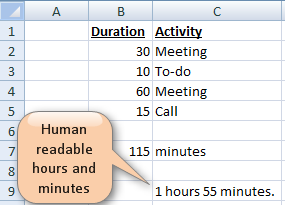

2011.Copied! // ✅ You can use a Quick one-liner hack const ms = 54000000 console.
#Hours to minutes free
Wikipedia, The Free Encyclopedia, last visited 26 Jun. " Conversion of units" Wikipedia, The Free Encyclopedia. Lide, David R., Daniel (Editor-in-Chief).ĬRC Handbook of Chemistry and Physics, 89th Edition, New York, NY: CRC Press, p. 1-28, 2008. The NIST Guide for the Use of the International System of Units - Appendix B, subsectionsī.8 Factors for Units Listed Alphabetically andī.9 Factors for units listed by kind of quantity or field of science. The National Institute of Standards and Technology (NIST). How Many? A Dictionary of Units of Measurement. Traditionally, observatories had clocks set to this sidereal cycle, and astronomers still use sidereal time in making telescope settings. The sidereal hour equals 59 minutes 50.17 seconds the sidereal minute equals 59.8362 seconds the sidereal second equals 0.997 270 second. Like the regular day it is divided into 24 sidereal hours, each sidereal hour being divided into 60 sidereal minutes and each sidereal minute into 60 sidereal seconds.

The minute is a unit of time or of angle. In modern usage, an hour comprises 60 minutes, or 3,600 second. Definition: The hour (common symbol: h or hr, h being the international form of the symbol) is a unit of measurement of time. The sidereal day equals 23 hours 56 minutes 4.090 54 seconds, or 86 164.090 54 seconds. Always check the results rounding errors may occur.


Thus the sidereal day, the average interval between two successive risings of the same star, is shorter than the mean solar day (see day) by 1/366.242. We only count 365.242 because one rotation is cancelled out for us by our tour around the sun. If we could view the earth from outside the Solar System, we would see that it actually completes 366.242 rotations during one year (one revolution around the sun). Sidereal day: a unit of time used in astronomy, equal to the period of time in which the earth makes one rotation relative to the stars. To convert directly from minutes to hours you multiply by 0.01 6. Simplified, this is the same as multiplying by 60/3600 which is 0.016666667. Melanie’s weekly pay based on her total hours is then: 37.7 hours x 15 565. The correct calculation is thus: 42 minutes/60 0.7 Then you have to add the converted minutes to the hours: 37 + 0.7 37.7 This means that 37 hours and 42 minutes convert to 37.7 hours in decimal time. To convert from minutes to hours multiply the number of minutes by 60 and then divide by 3600. You have to convert minutes into decimals. Or you can find the simplified factor by dividing the conversion factor for A by the conversion factor for B. To convert among any units in the left column, say from A to B, you can multiply by the factor for A to convert A into seconds then divide by the factor for B to convert out of seconds. This is the same as dividing 28,800 seconds by 3600 seconds per hour.Multiply 28,800 seconds by 1/3600 hours per second.If somebody asks us the question, for example, a teacher in a classroom, we will present the solution immediately. The period of time is equal to 60 minutes. Example 4: Convert 1 2 hr 7 min into minutes. Step 2- Add the given minutes to the result obtained from the previous step 420 min + 12 min 432 minutes Hence 7 hours 12 minutes are equal to 432 minutes. Multiply 120 minutes by 60 seconds per minuteĮxample: Convert 28,800 Seconds into Hours Well, to answer that mystery, we need to know a ratio between hours and minutes. Step 1- convert the number of hours into minutes 7 h r 7 × 60 m i n 7 h r 420 m i n So, 7 hr is equal to 420 minutes.The table below contains conversion factors to convert any time value into seconds using multiplication.Įxample: Convert 120 Minutes into Seconds Where S is the starting value, C is the conversion factor, andĮ is the converted result. By knowing the conversion factor, converting between units can become a simple math problem: You can use conversion factors to convert a unit of time into another using multiplication or division. This calculator does not consider the extra day in a leap year which has 366 days per year. Years in this time converter are calculated as 365 days per year. This is equal to 365 days per year divided by 12 months per year. Months in this time conversion calculator are calculated using the average of 30.41 6 days per month. You can convert between seconds, milliseconds, microseconds, nanoseconds, days, hours, weeks, months, and years. Enter the time value and units you want to convert from, then choose the time unit you want to convert to.


 0 kommentar(er)
0 kommentar(er)
